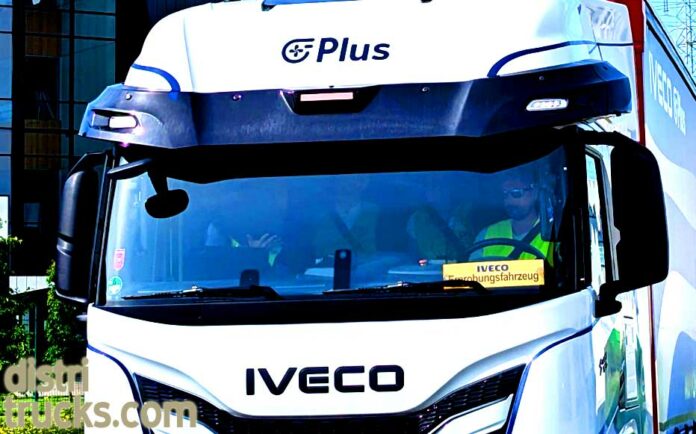Iveco has been driving a semi-autonomous truck in Germany, for test purposes. The truck manufacturer expects that self-driving trucks will be part of daily traffic in a few years.
Iveco has successfully completed a test with semi-autonomous trucks, together with software company Plus, DSV and drugstore chain dm. This was the first test of this technology on public roads in Germany. Goods were delivered under realistic conditions on the route between two warehouses in Krefeld and Hennef.
The semi-autonomous solution was jointly developed by Iveco and Plus, an American software company for self-driving cars. Equipped with an AI-based driving solution with advanced sensors such as lidar, radar and cameras, this Iveco S-Way tractor offers the driver a 360-degree view around the vehicle and new ways to monitor traffic and the road, which increases safety and comfort. The autonomous driving technology can safely and automatically perform normal highway maneuvers such as lane centering, driver-initiated (or system-suggested) lane changes, traffic jam assistance and evasive maneuvers. The driver monitors the system. According to Iveco, the system can reduce fuel consumption by around 10 percent.
“This successful demonstration is another important step towards the commercialization of highly automated driving technologies in the logistics sector. Thanks to this joint pilot, we were able to validate the capabilities of our advanced driver assistance system in practice and confirm improvements in safety, fuel efficiency and overall driving performance. These results reinforce our belief that automation will not replace drivers, but rather enhance their role by reducing fatigue, assisting with complex maneuvers and creating a safer, more productive working environment,” said Marco Liccardo, Chief Technology & Digital Officer of the Iveco Group.
By testing the technology, the project partners are paving the way for the future deployment of semi-autonomous trucks and the testing of fully autonomous driving solutions for logistics. Self-driving trucks are expected to be commercially available in mass production in the US in 2027, followed by Europe.
In the near future, drivers will remain in the cab for safety reasons until new infrastructure is developed to regulate things like charging or refueling. Matthiesen sees great potential in the technology and outlines a further vision of the future: “The new technology will not destroy jobs, on the contrary: it will create new opportunities and jobs. Drivers will be trained to use their expertise in other areas. This is conceivable, for example, in control towers that will closely monitor and support daily operations. New jobs will also be created for carrying out checks before and after the vehicles arrive, or for other tasks that still require human intervention.”





